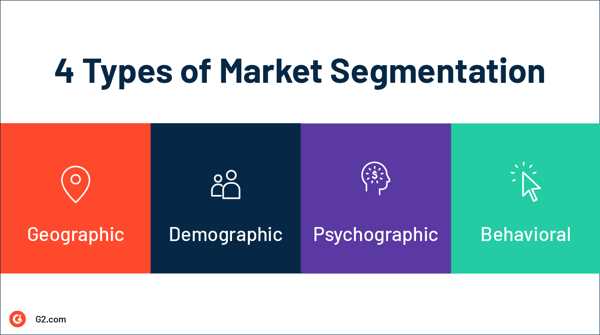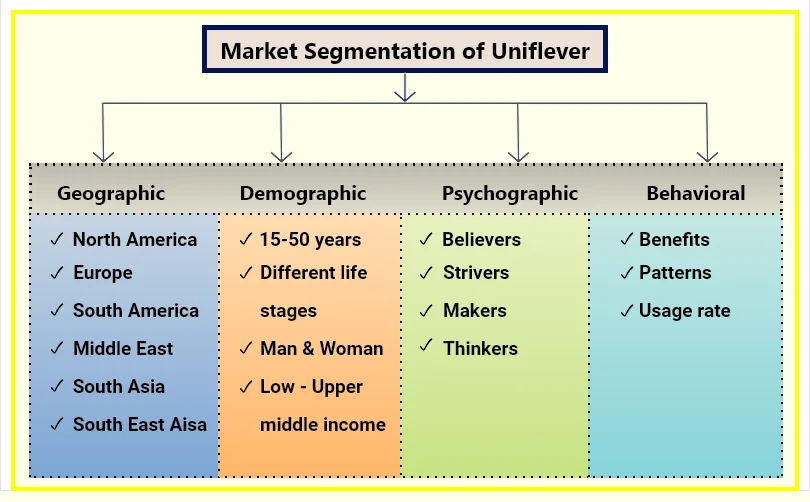Market Segmentation: Definition, Example, Types, Benefits
Market segmentation is a crucial concept in marketing that involves dividing a broad target market into smaller, more manageable segments based on certain characteristics or criteria. By segmenting the market, businesses can better understand their customers and tailor their marketing strategies to meet the specific needs and preferences of each segment.
Definition:
Market segmentation refers to the process of categorizing a target market into distinct groups based on shared characteristics, such as demographics, psychographics, behavior, or geographic location.
Example:
For example, a clothing retailer may segment their market based on age groups, with separate marketing strategies for teenagers, young adults, and older adults. This allows the retailer to create targeted advertising campaigns and offer products that appeal to each specific segment.
Types of Market Segmentation:
There are several types of market segmentation that businesses can utilize:
- Demographic segmentation: Dividing the market based on demographic factors such as age, gender, income, occupation, and education.
- Psychographic segmentation: Categorizing the market based on lifestyle, values, attitudes, interests, and personality traits.
- Behavioral segmentation: Segmenting the market based on consumer behavior, such as purchasing habits, brand loyalty, usage rate, and benefits sought.
- Geographic segmentation: Dividing the market based on geographic location, such as country, region, city, or climate.
Benefits of Market Segmentation:
Market segmentation offers several benefits for businesses:
- Increased customer satisfaction: Tailoring products and services to the unique needs of each segment can lead to higher customer satisfaction and loyalty.
- Improved resource allocation: Market segmentation allows businesses to allocate their resources more efficiently by focusing on the most profitable segments.
- Competitive advantage: By effectively targeting specific segments, businesses can differentiate themselves from competitors and gain a competitive edge in the market.
What is Market Segmentation?
Market segmentation allows companies to focus their resources and efforts on the most profitable and responsive segments of the market. It helps businesses identify and understand the unique needs and desires of different customer groups, enabling them to develop products, services, and marketing campaigns that are specifically tailored to meet those needs.
By segmenting the market, businesses can also identify new opportunities for growth and innovation. They can uncover untapped customer segments that have specific needs that are not currently being addressed by existing products or services in the market. This can lead to the development of new offerings and the expansion of the business into new markets.
Overall, market segmentation is a critical tool for businesses to effectively target and engage with their customers. It allows them to better understand their audience, develop more relevant and personalized marketing strategies, and ultimately drive growth and profitability.
Example of Market Segmentation

Let’s consider an example to illustrate how market segmentation works. Imagine a company that sells athletic shoes. Instead of targeting all consumers with a generic marketing message, the company decides to segment the market based on different consumer characteristics.
For the professional athletes segment, the company focuses on high-performance shoes that offer advanced features such as superior cushioning, stability, and durability. The marketing message emphasizes how these shoes can enhance athletic performance and help athletes reach their full potential.
For the casual walkers segment, the company offers comfortable and stylish shoes that are perfect for everyday use. The marketing message emphasizes the importance of comfort and fashion, appealing to individuals who prioritize walking for leisure or as part of their daily routine.
By segmenting the market and tailoring their offerings to the specific needs of each segment, the company can effectively reach and engage with their target consumers. This approach allows them to differentiate themselves from competitors and build stronger relationships with their customers.
Types and Benefits of Market Segmentation

Market segmentation is a crucial strategy for businesses to effectively target their customers and tailor their marketing efforts. By dividing the market into distinct segments based on various criteria, businesses can better understand their customers’ needs and preferences, and create targeted marketing campaigns. Here are some of the types and benefits of market segmentation:
1. Demographic Segmentation
Demographic segmentation involves dividing the market based on demographic factors such as age, gender, income, education, occupation, and marital status. This type of segmentation allows businesses to understand the characteristics and behaviors of different demographic groups, enabling them to create marketing messages that resonate with their target audience.
2. Geographic Segmentation

Geographic segmentation involves dividing the market based on geographic factors such as location, climate, population density, and cultural preferences. This type of segmentation helps businesses tailor their marketing efforts to specific regions or areas, taking into account the unique characteristics and needs of customers in each location.
3. Psychographic Segmentation
Psychographic segmentation involves dividing the market based on psychological factors such as personality traits, values, attitudes, interests, and lifestyles. This type of segmentation allows businesses to understand the motivations and preferences of different customer segments, enabling them to create marketing messages that resonate on a deeper emotional level.
4. Behavioral Segmentation

Behavioral segmentation involves dividing the market based on customer behaviors such as purchasing habits, brand loyalty, usage rate, and buying motivations. This type of segmentation helps businesses identify different customer segments based on their behaviors and preferences, allowing them to create targeted marketing campaigns and personalized offers.
Benefits of market segmentation include:
1. Better Targeting:
Market segmentation allows businesses to target specific customer segments with tailored marketing messages and offers. This increases the effectiveness of marketing campaigns and improves the chances of attracting and retaining customers.
3. Increased ROI:
Targeted marketing campaigns result in higher conversion rates and increased return on investment (ROI). By focusing their efforts on the most profitable customer segments, businesses can optimize their marketing spend and achieve better results.
4. Competitive Advantage:
Market segmentation allows businesses to differentiate themselves from competitors by offering unique products, services, and marketing messages that cater to specific customer segments. This helps businesses stand out in the market and attract customers who resonate with their offerings.

Emily Bibb simplifies finance through bestselling books and articles, bridging complex concepts for everyday understanding. Engaging audiences via social media, she shares insights for financial success. Active in seminars and philanthropy, Bibb aims to create a more financially informed society, driven by her passion for empowering others.
